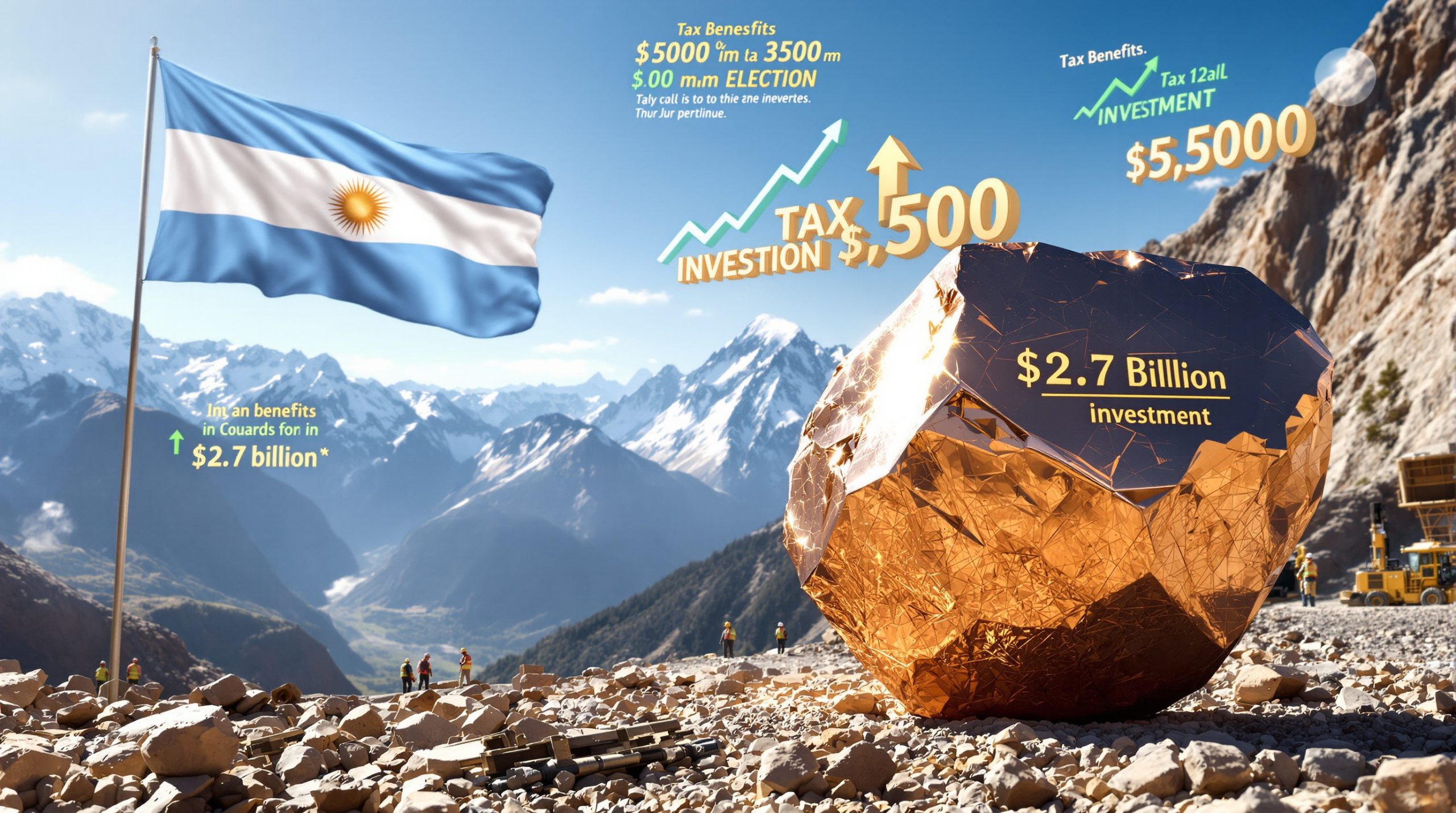What Are Gold Royalties and How Have They Evolved in Mining Finance?
Gold royalties represent a time-tested financial structure in mining where investors receive a fixed percentage of revenue or production from mining operations without taking on operational responsibilities. This distinctive investment vehicle has evolved significantly from its historical origins to become a sophisticated financial instrument in modern mining finance.
Understanding Gold Royalties, NSRs, and Streams
Gold royalties provide investors with exposure to precious metals production without the operational challenges of mine development and management. The royalty holder simply collects their agreed-upon percentage while the mining company handles all aspects of production.
Net Smelter Returns (NSRs) represent a specific type of royalty calculated as a percentage of net revenues after deducting smelting and refining costs. This structure allows the royalty holder to participate in production economics while accounting for processing expenses.
Streaming agreements differ slightly, involving upfront capital in exchange for the right to purchase a percentage of future production at a predetermined discounted price. As explained by industry executives, a typical stream might grant the investor 5% of gold production at 20% of spot price—effectively an 80% discount to market prices.
Unlike traditional debt or equity investments, royalty and streaming deals often include additional security features, with streaming companies typically taking "first ranking security over the assets" to protect their investment position.
Historical and Modern Growth of the Royalty Model
The royalty concept originated in feudal systems where monarchs owned land and miners paid "royal fees" to extract minerals—the original royalties. As North America developed, this evolved into arrangements where landowners who lacked mining expertise or capital received royalties from companies mining their properties.
The modern business-focused royalty model emerged in the 1980s when Franco-Nevada pioneered a commercial approach to royalty investments. This innovation was followed by Wheaton Precious Metals' introduction of the streaming model in 2004, creating a framework that has since become an industry standard.
Today's royalty and streaming landscape features companies of various sizes pursuing different strategies, from major consolidators like Franco-Nevada, Wheaton Precious Metals, and Royal Gold to specialized mid-tier and junior companies targeting specific market segments.
How Has M&A Activity Reshaped the Gold Royalty Sector?
The gold royalty sector has undergone significant structural changes through merger and acquisition activity, particularly in recent years as larger players seek growth through consolidation.
Recent Mergers, Acquisitions, and Strategic Consolidation
The sector has witnessed substantial consolidation with major players actively expanding their portfolios. Industry experts observe that "the big ones are getting bigger and the midsize ones are getting eaten up" as companies are rewarded by markets for strategic acquisitions that build scale.
Several high-profile transactions have reshaped the competitive landscape. Gold Royalty Corp's acquisition of Sandstorm assets, Triple Flag's purchase of Orion royalties, and the combination of EMX Royalty and Elemental Altus Royalties (now with investment from Tether) highlight the drive toward consolidation.
Perhaps most notable was Royal Gold's all-share gold takeover offer of Sandstorm and Horizon Copper, described by industry observers as "a good acquisition" that will "give Royal Gold a huge lift" in a sector where meaningful growth can be challenging for established players.
This consolidation trend has been accelerating over the past five years, with fewer independent mid-tier companies remaining as larger entities absorb them into expanding portfolios.
Trends in Industry Structure
The industry structure is evolving toward greater concentration, with dominant large-cap companies at the top of the market (Wheaton, Royal Gold, Franco-Nevada), a shrinking middle tier, and a competitive field of junior companies seeking to establish meaningful scale.
An interesting development has been the entry of non-traditional capital sources into the royalty space. The investment by stablecoin issuer Tether into Elemental Altus represents a significant milestone, bringing cryptocurrency-related capital into the mining royalty sector and potentially signaling broader interest from financial technology players.
Industry consolidation has been particularly notable in the mid-tier segment, where companies have merged to achieve scale or been acquired by larger entities seeking portfolio diversification and immediate revenue growth.
What Drives Gold Royalty M&A Trends in 2025?
Multiple factors are accelerating consolidation in the gold royalty sector, creating both challenges and opportunities for companies across the market capitalization spectrum.
Market Catalysts Behind Consolidation
Scale has become increasingly important as larger portfolios provide improved cash flow predictability and reduced operational risk. Industry participants emphasize that "cash flow and real revenue generation" are critical drivers, with companies seeking immediate returns rather than long-dated potential.
Access to new capital sources has emerged as a significant catalyst, with cryptocurrency wealth entering the space alongside more traditional investment. The Tether investment in Elemental Altus demonstrates "new capital coming into our sector" with "a very clear strategy" to gain "access to gold and silver" through royalty structures.
Direct relationships and proprietary deal flow have become competitive advantages, particularly for companies that can leverage global networks and experienced management teams with demonstrated track records of identifying and executing mining M&A strategies.
Role of Macroeconomic and Geopolitical Factors
Elevated precious metals prices have provided tailwinds for the sector, with gold surpassing $2,000/oz in 2024. Many royalty companies had been modeling investments at much lower prices ($1,750/oz gold and $17.50/oz silver), creating significant upside as market prices exceeded these conservative projections.
Ongoing geopolitical uncertainties continue driving investor interest in gold as a safe haven asset. This trend is particularly evident in Asia, where high-net-worth individuals who "were typically holding 4% gold" have reportedly "increased that to 12% in 2024" according to industry sources.
Geographic diversification has become increasingly important as companies seek to balance jurisdictional risks. Established royalty companies now operate across multiple continents, with portfolios spanning tier-one mining jurisdictions and carefully selected emerging markets where appropriate security structures can mitigate country-specific challenges.
How Do Experts Evaluate Deal Quality and Value in Royalty M&A?
Assessing value in royalty company transactions requires specialized metrics and due diligence methodologies tailored to this unique business model.
Core Metrics and Valuation Approaches
While Net Asset Value (NAV) per share remains an important consideration, industry experts emphasize that NAV alone is insufficient for comprehensive analysis. Increasingly, "cash flow to price ratio" has become "very important" with "a lot of torque in it" for evaluating royalty businesses.
Cash flow-based metrics have gained prominence as investors focus on near-term returns rather than long-dated potential. According to industry participants, "the sector is about 25" times cash flow, providing a benchmark for comparative analysis.
Portfolio diversification across jurisdictions and project stages (producing versus development) represents another critical evaluation factor, particularly as companies seek to balance risk and growth potential while maintaining sustainable cash flow generation.
Unique Due Diligence Methodologies
Royalty companies employ specialized due diligence processes that extend far beyond standard financial analysis. Technical assessments conducted by "mining engineers and geologists going through the technical reports" form the foundation of project evaluation.
Third-party validation adds another layer of scrutiny, with companies "hiring third-party engineers to gut a site" and conducting comprehensive reviews of "all the environmental social plans… all the permits, all the legal agreements, financial review, tax review" before making investment decisions.
For streaming transactions, security structures create additional protection, with companies typically receiving "first ranking security over the assets." This approach mirrors project finance methodologies where lenders secure specific project assets rather than relying solely on corporate guarantees.
How Can Investors Identify Value and Manage Risk in Gold Royalty Companies?
Royalty companies employ distinct investment strategies and risk management approaches that investors must understand to make informed decisions.
Key Differentiators Among Royalty Companies
Investment strategies vary significantly across the sector. "Prospect generators" focus on "early-stage inexpensive to acquire" assets, while acquisition-focused companies target "existing royalties that are already out there" through competitive bid processes. A third category focuses on "the creation side" by "creating that direct money into the company really helping mines get into production."
Commodity exposure represents another key differentiator. Some companies maintain "pure gold and silver" portfolios to maximize precious metals leverage, while others diversify across base metals, battery materials, and other resources. This strategic choice significantly impacts how companies perform through various commodity cycles.
Geographic focus also varies widely, from companies concentrated in "pure tier one jurisdictions" (North America, Australia) to those with global portfolios spanning multiple continents. Successful international operators emphasize understanding "political stability of a country" and "how to structure what is a legal framework, how to structure there, how to be able to get money in and out of the country."
Risk Management and Portfolio Construction
Diversification across multiple dimensions provides essential risk mitigation. Leading royalty companies build portfolios diversified by "geographically that stage of project that is management teams" to reduce concentration risk and create more stable cash flows.
Strategic deal structures enhance security, particularly in challenging jurisdictions. In one example from Peru, a royalty company receives "gold credits every week from Metalor" as gold is "shipped to Switzerland on a weekly basis" with silver credits processed "10 days later when it's processed at Metalor"—demonstrating how transaction structures can mitigate country-specific risks.
Investment size often correlates with company scale, with major players targeting "$100 million plus" transactions while smaller operators focus on the "5 10 15 20 million range" where competition may be less intense and opportunities more abundant.
Comparison of Royalty Company Strategies
| Company Archetype | Typical Deal Size | Asset Stage Focus | Risk & Return Profile |
|---|---|---|---|
| Large-Cap (e.g., Franco) | $100M+ | Producing/late-dev | Low risk, moderate growth |
| Mid-Tier (Triple Flag, EMX) | $20–$100M | Mixed portfolio | Balanced risk/reward |
| Junior/Direct Creators | $3–$25M | Near-term/production | Higher risk, higher torque |
This strategic differentiation creates investment opportunities across various risk profiles, from conservative large-cap exposure to more speculative junior companies with greater upside potential but correspondingly higher risk.
FAQ: Navigating Common Questions on Gold Royalty M&A
Why are gold and silver royalty companies often valued higher than those focused on battery metals?
Gold and silver royalty companies typically command premium valuations due to the "torque of what gold and silver can go" in price movements and the "demand for gold as being a safe haven investment." While battery metals have strong demand drivers, precious metals royalties offer leverage to commodity price increases in assets widely recognized as inflation hedges and safe havens during economic uncertainty.
Furthermore, the gold and silver royalty market is more mature, with established models for valuation and a broader investor base familiar with these commodities. Companies that stay "pure to gold and silver" often attract premium multiples compared to more diversified competitors.
How can new investors assess the management team's ability to win quality deals?
Management evaluation should focus on track record, industry relationships, and technical expertise. The most successful teams emphasize "direct relationships" where "we know the management team, we know how they operate, we know what they're capable of" rather than relying solely on competitive bid processes.
Teams with relevant experience across multiple mining finance disciplines (project finance, technical evaluation, legal structuring) often demonstrate superior deal sourcing capabilities and risk management. Look for executives with proven histories of creating value through multiple market cycles rather than those who have only operated in favorable conditions.
What can go wrong post-acquisition?
Post-acquisition challenges include underperforming assets, integration difficulties, and jurisdictional issues. Even with thorough due diligence, mining operations can encounter geological surprises, processing challenges, or community relations issues that impact royalty returns.
Integration risks increase with transaction size and complexity, particularly when combining companies with different investment philosophies or geographic focuses. Maintaining discipline around portfolio diversification helps mitigate these risks by ensuring no single asset dominates performance.
Jurisdictional stability remains an ongoing concern, requiring sophisticated structuring and security arrangements, particularly in emerging markets. Successful operators emphasize "how to structure there, how to be able to get money in and out of the country, how to be able to take security over the assets" as essential risk management practices.
What Is the Outlook for Gold Royalty M&A Through 2025 and Beyond?
The gold royalty sector's consolidation trend appears set to continue, with several factors driving further M&A activity through 2025 and beyond.
Future Opportunities and Growth Drivers
Non-traditional capital sources continue entering the space, with "crypto money coming into the space" alongside increased interest from generalist investors seeking inflation protection and commodity exposure. This broadening investor base provides additional capital for acquisitions and organic growth.
Junior and mid-tier companies face both challenges and opportunities in this environment. While scale pressures may drive further consolidation, innovative financing structures and strategic specialization can create niches where smaller players thrive by targeting transaction sizes below the threshold of interest for major competitors.
The ongoing need for non-dilutive funding among miners creates a sustainable opportunity pipeline, particularly as traditional debt and equity markets remain challenging for smaller producers and developers. Royalty and streaming arrangements offer these companies capital without the dilution of equity raises or the restrictive covenants of conventional debt.
Case Study: Strategic Growth Through Targeted Acquisition
A junior royalty company leveraging fresh capital from international backers could transform its market position through strategic acquisitions. By focusing on near-term or producing assets in the $5-20 million range—below the threshold of major competitors—such a company could rapidly build a diversified portfolio generating immediate cash flow.
With gold price forecast figures significantly above the conservative modeling assumptions used by many in the industry ($1,750/oz gold and $17.50/oz silver), acquisitions completed at these baseline prices offer substantial upside as commodity prices rise. This approach allows smaller players to create outsized returns by targeting opportunities overlooked by larger competitors focused on nine-figure transactions.
Key Takeaways for Investors in Gold Royalty M&A Trends
The gold royalty sector continues evolving through strategic consolidation, with scale benefits driving gold royalty M&A trends across the market capitalization spectrum. While major players dominate headline transactions, opportunities exist across various company sizes and investment strategies.
When evaluating royalty companies, investors should look beyond simple NAV calculations to consider cash flow generation, portfolio diversification, and management's demonstrated ability to source and structure value-creating transactions. The most successful companies combine disciplined technical evaluation with creative financial structuring to build sustainable competitive advantages.
Gold's enduring role as a safe haven asset during periods of economic and geopolitical uncertainty underpins the long-term investment case for royalty companies. This trend appears to be strengthening, with high-net-worth investors reportedly increasing their gold allocations significantly in recent years.
Diversification remains essential for both royalty companies and investors in the sector. The most resilient portfolios balance geographic exposure, asset stages, and operator quality to create stable cash flows while maintaining exposure to exploration and development upside.
As consolidation continues, companies that successfully navigate the gold stock market guide and M&A landscape—whether as acquirers or acquisition targets—will likely deliver superior returns to shareholders. Understanding the strategic positioning of various players and their comparative advantages in sourcing, evaluating, and financing transactions provides investors with a framework for identifying the most compelling opportunities in this dynamic sector.
Recent gold price highs analysis suggests that the favourable environment for gold royalty companies may continue, potentially accelerating the M&A activity that has characterized the sector in recent years.
Want to Spot the Next Major Gold Discovery Before the Market?
Discovery Alert's proprietary Discovery IQ model delivers instant notifications of significant ASX mineral discoveries, transforming complex data into actionable investment opportunities. Explore historic examples of exceptional returns at our dedicated discoveries page and position yourself ahead of the market.




